Introduction
Separation anxiety in puppies can feel like a riddle wrapped in a mystery inside an adorable little furball. Imagine bringing home a fluffy companion who seems to have an uncanny ability to sense your every move—especially when you attempt to leave the house! This condition, often misunderstood, is more than just a case of puppy clinginess; it’s a complex emotional response that can lead to distressing behaviors. As much as we love our puppies, their cries and antics can leave us feeling helpless. But fear not! In this comprehensive guide, we’ll unpack the reasons behind separation anxiety in puppies, its symptoms, and, most importantly, how to manage and prevent it.
Separation anxiety can show up in various ways. Ever come back home only to find your shoes chewed to bits? Or maybe your puppy decided that the couch was a great canvas for their artistic expressions? These behaviors can be signs of deeper emotional struggles. Puppies, much like us humans, can feel anxious when they’re left alone. Their little hearts might race, and their minds may spiral into worry when they realize you’ve vanished.
Understanding the roots of this anxiety is key. Puppies that haven’t learned to cope with alone time can develop intense fears. Early socialization, gradual separation experiences, and positive reinforcement play vital roles in shaping a puppy’s comfort level with being alone. This journey may take time, but with the right approach, we can guide our furry pals toward a calmer mindset. As we dive deeper into this topic, we’ll shed light on how to identify symptoms, the psychological factors at play, and practical strategies to help your puppy thrive, even when you’re not around.
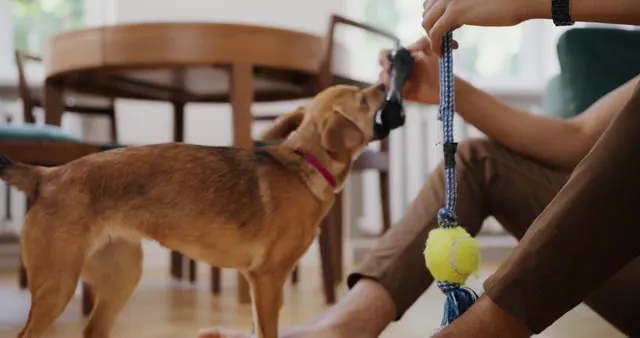
Speaking of helping your pup thrive, consider investing in a PetSafe Wireless Pet Containment System. This system allows you to create a safe space for your puppy without the need for physical fences. It’s perfect for those who want to give their pets freedom while ensuring they stay out of trouble.
Understanding and managing separation anxiety in puppies is essential for their well-being. Learn more about this topic here.
Summary
In this article, we will explore the multifaceted issue of separation anxiety in puppies, shedding light on its causes, symptoms, and effective management strategies. The key points discussed include:
- Understanding Separation Anxiety: We’ll define separation anxiety and how it manifests in puppies, distinguishing it from normal puppy behavior.
- Common Symptoms: From excessive barking to destructive chewing, we’ll identify the telltale signs that your puppy may be experiencing separation anxiety.
- Why Do Puppies Get Anxious: We’ll dive into the reasons behind this condition, including lack of socialization, past traumas, or even genetics.
- Preventive Measures: Early intervention is crucial, and we’ll discuss strategies to help puppies learn to cope with being alone, including gradual desensitization techniques and creating a routine.
- Management Techniques: We’ll explore practical tips for managing existing anxiety, such as crate training, the use of calming aids, and the importance of a stable environment.
- Seeking Professional Help: Understanding when to consult a veterinarian or a certified canine behaviorist is vital for persistent cases.
By the end of this article, you’ll not only understand separation anxiety better but also feel empowered with actionable strategies to help your puppy navigate this challenging emotional landscape, paving the way for a happy, well-adjusted canine companion.
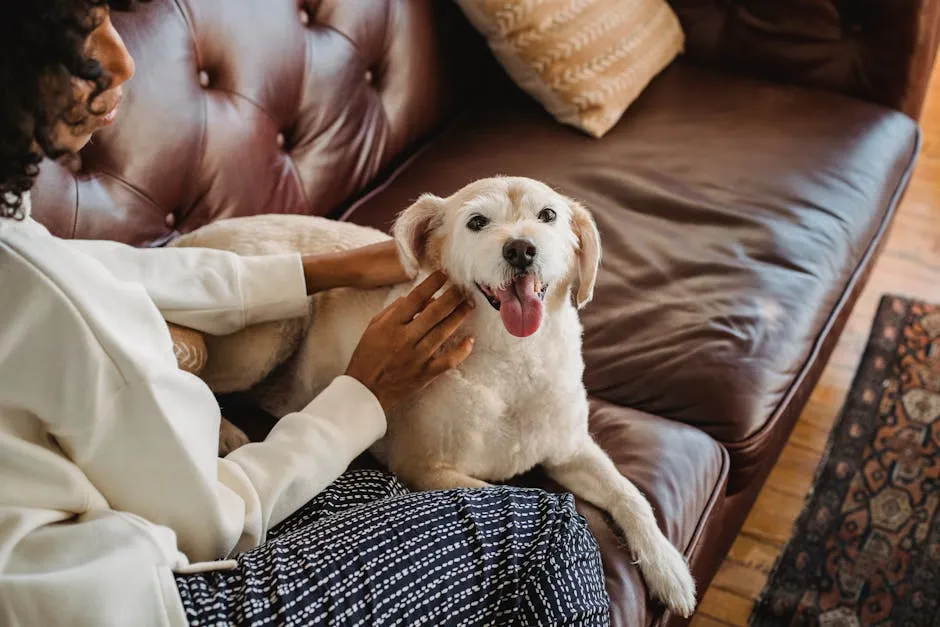
Understanding Separation Anxiety in Puppies
What Is Separation Anxiety?
Separation anxiety is a condition where puppies become distressed when left alone. It’s more than just a case of puppy clinginess. Normal puppy behavior includes a little whining when you leave, but when anxiety kicks in, the reactions can be intense. Imagine your puppy barking like a siren or chewing the couch as if it were a chew toy. These behaviors signal deeper emotional struggles.
Puppies often express separation anxiety through various actions. They might whine, howl, or even destroy your favorite shoes. It’s crucial to understand that these are not just signs of mischief—they reflect genuine distress. Puppies crave social interaction and can feel abandoned when separated from their humans. In severe cases, this anxiety can lead to excessive barking, destructive behavior, or even self-harm. Recognizing these behaviors early can help you intervene before they escalate.
The roots of separation anxiety often trace back to early experiences. Puppies that weren’t socialized properly or were weaned too early may struggle more. Therefore, it’s vital to create a positive environment for your pup. This includes gradual exposure to alone time and ensuring they have plenty of social interactions. By recognizing the difference between normal puppy behavior and signs of anxiety, you can take steps to help your furry friend feel more secure.
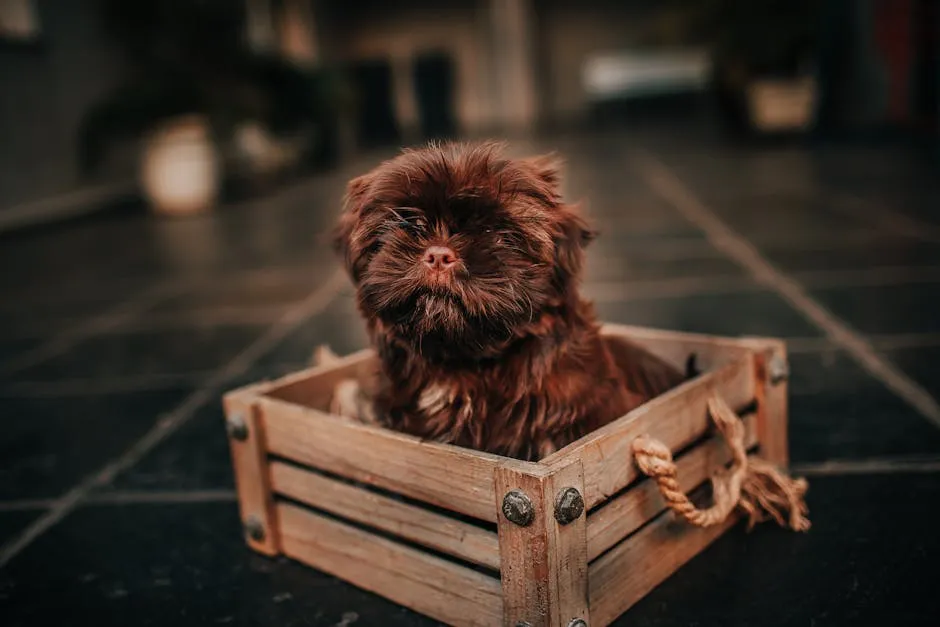
For those moments when you need to leave your puppy alone, consider giving them a KONG Classic Dog Toy. Fill it with some peanut butter or treats, and watch your pup stay entertained while you’re away. It’s a win-win for everyone!
Common Symptoms
Puppies suffering from separation anxiety can exhibit several symptoms. Recognizing these signs is crucial for addressing the issue effectively.
- Excessive barking: This is often the first sign. Your puppy might bark continuously when you leave, sounding like a distressed alarm.
- Destruction of furniture or belongings: Puppies may chew on furniture or other items, expressing their anxiety through destructive behaviors.
- Attempted escape: Some puppies might try to escape their confinement area, scratching at doors or climbing over gates. This is a sign they desperately want to be with you.
- House soiling: Even well-trained puppies may have accidents when anxious. This behavior often occurs when they can’t hold it due to the stress of being alone.
- Excessive drooling or panting: These physical symptoms can indicate stress. If your puppy is drooling excessively or panting heavily, it could be a sign of anxiety.
Identifying these symptoms early can help you manage your puppy’s anxiety effectively.
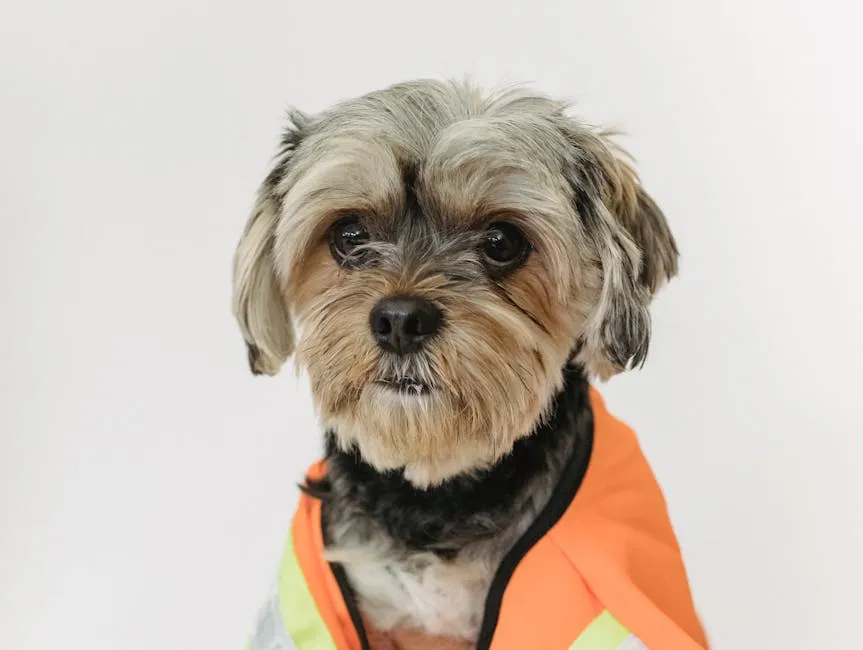
Why Do Puppies Develop Separation Anxiety?
Understanding why puppies develop separation anxiety is key to addressing it. Several factors can contribute to this condition.
- Early life experiences: Puppies weaned too early or lacking sufficient socialization may struggle with anxiety. Experiencing trauma, such as abandonment, can also leave a lasting impact.
- Genetics and breed predispositions: Some breeds are naturally more prone to anxiety. If your puppy comes from a lineage with anxiety issues, they might inherit these tendencies.
- Changes in routine or environment: Sudden changes can trigger anxiety. Moving homes, changes in family structure, or shifts in daily routine can leave puppies feeling confused and vulnerable.
Understanding these factors can help you create a supportive environment for your puppy. By addressing the root causes of their anxiety, you can assist your furry friend in feeling secure and relaxed when alone. With patience and the right strategies, your puppy can learn to cope with their fears and become more independent.

For additional peace of mind, consider using a ThunderShirt Classic Dog Anxiety Jacket. It applies gentle pressure to your pup, mimicking the comforting feeling of being held, which can help alleviate anxiety during stressful times.
Preventing Separation Anxiety in Puppies
Early Socialization Techniques
Socialization is crucial for puppies. It sets the stage for their behavior as adults. Exposing puppies to various environments helps them grow into well-adjusted dogs. Think of it as their first taste of the big, exciting world!
Start by introducing your puppy to different sounds, sights, and smells. This can include busy streets, parks, and even bustling cafes. The goal is to build their confidence. When they encounter new experiences, they’ll feel less anxious later when left alone.
Meeting new people is equally important. Invite friends over or take your puppy to a pet-friendly gathering. Allow them to interact with different folks. This interaction helps your pup learn that not everyone is a threat, making them more adaptable.
Don’t forget about other dogs! Arrange playdates with well-behaved canines. Puppies learn valuable social cues from their peers. They also discover how to share space and toys, which is essential for reducing anxiety in the future.
Remember to keep these experiences positive. Use treats and praise to reinforce good behavior. The more enjoyable these interactions are, the more your puppy will look forward to them. This foundation will help them feel secure when faced with new situations later on.
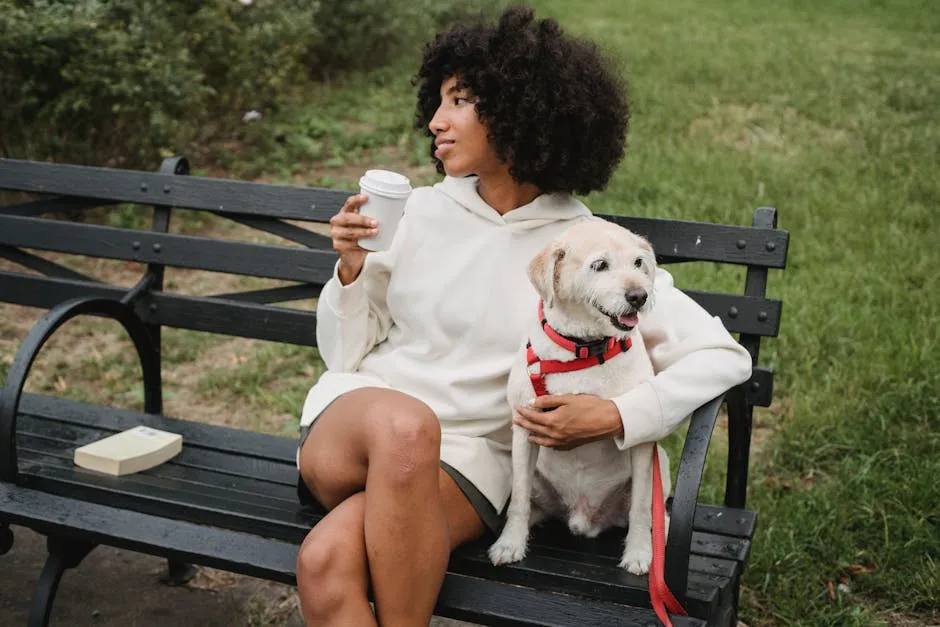
In short, early socialization is like giving your puppy a toolkit for adulthood. The more well-rounded their experiences, the less likely they are to develop separation anxiety down the line. So, get out there and start introducing your puppy to the delightful chaos that is life!
And while you’re building those social skills, why not enhance playtime with the ZippyPaws – Burrow Squeaky Hide and Seek Dog Toy? It’s an interactive toy that stimulates your pup’s natural instincts and keeps them entertained, making it perfect for those early socialization days!
Gradual Acclimatization to Alone Time
Getting your puppy used to being alone takes time and patience. Start with short separations. Leave them alone for just a few minutes while you step outside. Gradually increase the duration as they become more comfortable.
Make sure to create a positive environment for these alone sessions. Provide engaging toys or puzzles to keep their minds occupied. A stuffed Kong with tasty treats can work wonders! The key is to help your puppy associate your absence with fun, not fear.
Next, build up to longer periods away. Aim for a gradual increase—think of it as training for independence. Over time, your puppy will learn that being alone is okay. They’ll come to understand that you always return.
Avoid making your departures a big event. Keep them low-key to prevent your puppy from getting anxious. If they sense your excitement or sadness when you leave, it can amplify their stress. Instead, practice calm goodbyes and hellos.
By gently acclimating your puppy to alone time, you’re helping them develop confidence. This will significantly reduce the chances of separation anxiety later in life. After all, a well-adjusted puppy is a happy puppy!
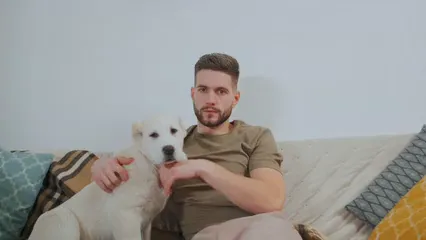
Managing Separation Anxiety in Puppies
Effective Management Techniques
Managing separation anxiety in puppies requires a multifaceted approach. One effective method is crate training. A crate provides a safe space for your puppy. Make it a cozy den by adding a comfortable bed and some toys. This will help them see the crate as a positive environment.
Start the training gradually. Encourage your puppy to explore the crate while you’re nearby. Use treats and praise to reinforce their comfort. Once they feel secure, you can begin closing the door for short periods. Gradually increase the time they spend in the crate while you’re out of sight.
In addition to crate training, provide engaging toys and puzzles to occupy your puppy during alone time. Toys that dispense treats can keep them mentally stimulated. A busy pup is a calmer pup!
Consider using calming aids, too. Pheromone diffusers mimic the calming scents of a mother dog. These can create a soothing atmosphere for your puppy. Anxiety wraps, which provide gentle pressure, can also ease their stress. Check out the PetSafe Pheromone Diffuser for a calming solution!
Monitor your puppy’s behavior when you leave. If they exhibit signs of distress, consider using a webcam to observe their actions. This will help you understand what triggers their anxiety and how to address it effectively.
Finally, remember that consistency is key. Establish a routine for your puppy. Regular feeding times, play sessions, and potty breaks can create a sense of stability. The more secure they feel in their environment, the less anxious they will be during your absences.
With these strategies, you’ll be well on your way to helping your puppy overcome their separation anxiety. It’s a journey that requires patience, but the rewards are well worth the effort! A calm, confident puppy will bring joy to your home.
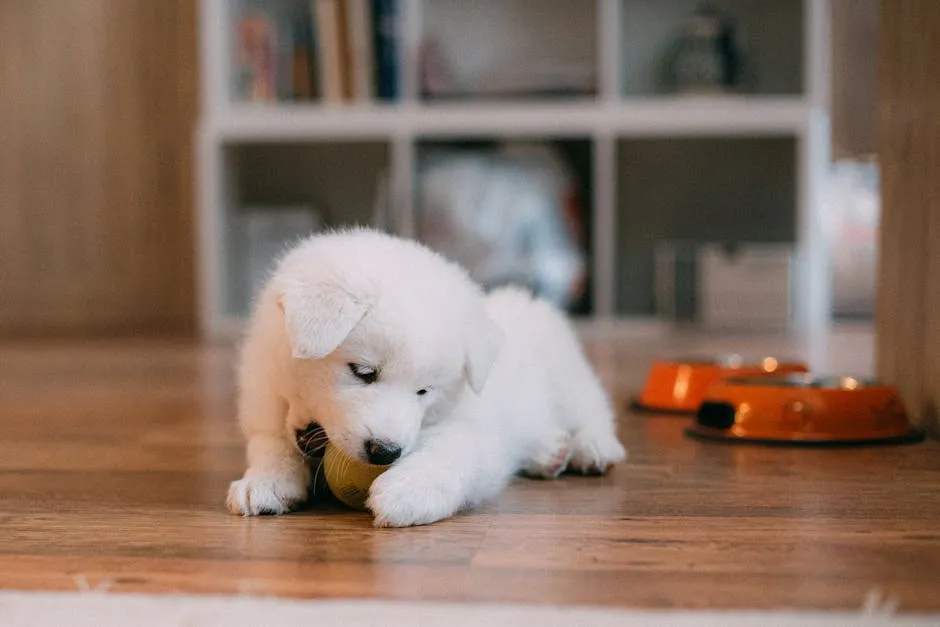
Behavioral Training Approaches
Managing separation anxiety in puppies can be achieved through effective training techniques. Two prominent methods are desensitization and counter-conditioning.
Desensitization involves gradually increasing the time your puppy spends alone. Start with very short absences, just a few minutes. Over time, extend this duration, ensuring your puppy remains calm during each separation. The goal is to help your puppy associate being alone with positive experiences rather than fear.
Counter-conditioning complements desensitization. This technique reinforces calm behavior when your puppy is left alone. For instance, provide a special treat or a favorite toy only when you are away. This creates a positive association with your absence. Your puppy learns that being alone can lead to something enjoyable, like a tasty treat, rather than anxiety.
Consistency is key. Regular practice will help your puppy adapt to your departures. Remember, patience is essential. Celebrate small victories along the way, as each step forward is progress toward a more confident, secure puppy. With time and the right techniques, you can help your furry friend feel more at ease when left alone.
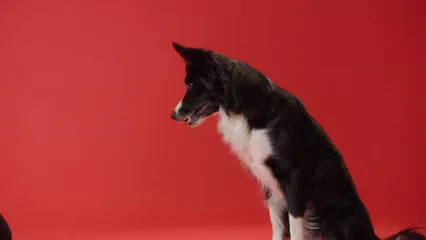
When to Seek Professional Help
Recognizing when your puppy needs professional assistance is crucial. There are clear signs that indicate it’s time to consult a veterinarian or a certified canine behaviorist. If your puppy exhibits severe symptoms of separation anxiety, such as destructive behavior, excessive barking, or self-harm, it’s essential to seek help. These behaviors can escalate quickly if not addressed appropriately.
Another sign is if your puppy struggles to cope despite your best efforts. If your training methods, like desensitization and counter-conditioning, don’t yield positive results after a reasonable period, it’s time to reach out to a professional. They can provide tailored strategies based on your puppy’s unique situation.
During a consultation, expect a thorough assessment of your puppy’s behavior. The professional will ask about your puppy’s history, environment, and symptoms. They may suggest a combination of behavioral training and, in some cases, medication. Medication can help alleviate anxiety and improve the effectiveness of training methods.
Additionally, professionals will guide you on creating a structured routine for your puppy. This routine is vital for fostering a sense of security. They may also recommend environmental changes to make your home more conducive to your puppy’s comfort.
In conclusion, don’t hesitate to seek professional help if your puppy’s separation anxiety seems unmanageable. Early intervention can lead to a happier, healthier puppy and a more relaxed household.
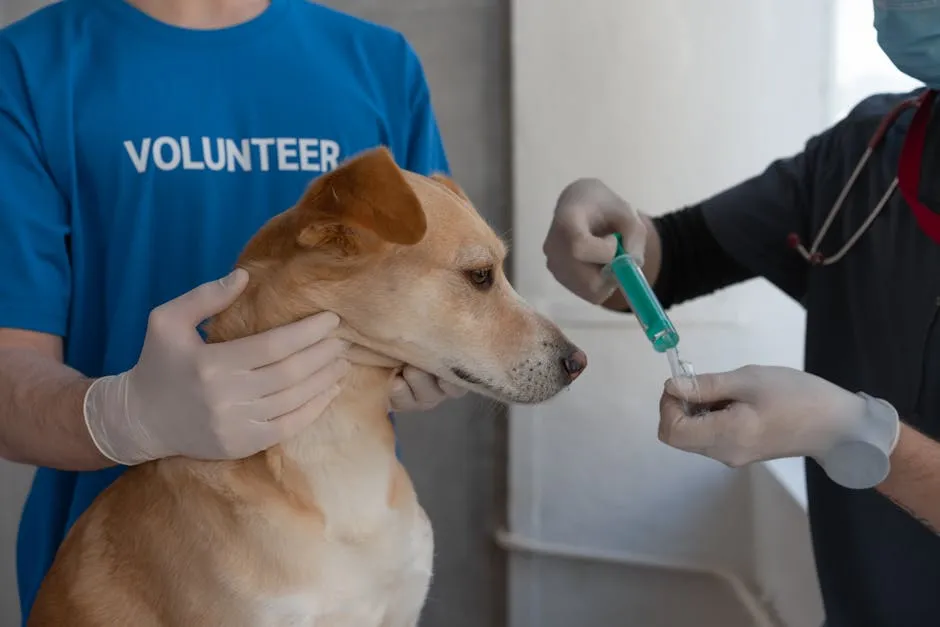
Conclusion
Understanding and addressing separation anxiety in puppies is crucial for their emotional well-being. This condition often leads to distressing behaviors that can strain the bond between you and your furry friend. By recognizing the signs early on, you can take proactive steps to help your puppy feel secure and comfortable when alone.
Throughout this guide, we’ve explored various techniques to manage separation anxiety effectively. From crate training to gradual desensitization, consistent practice is key. Remember, patience and positivity go a long way. Your puppy needs time to adjust and learn that being alone isn’t a scary experience. With each small success, you’ll notice improvements in their behavior.
As you implement these strategies, keep a close eye on your puppy’s progress. Celebrate the milestones, no matter how small. Even a few minutes of calm can be a big victory! So, stay committed to the process. Each day brings new opportunities for your puppy to thrive. With your love and support, they’ll learn to embrace independence, transforming their anxiety into confidence.
In the end, a well-adjusted puppy means a happier home for both of you. The journey might be challenging, but the rewards are absolutely worth it. Keep your chin up and your heart open; your puppy is counting on you!
FAQs
What is the difference between separation anxiety and normal puppy behavior?
Separation anxiety is a specific condition where a puppy shows extreme distress when left alone. Normal puppy behavior may include some whining or mild fussiness, but it doesn’t involve destructive actions or excessive vocalization. Separation anxiety leads to significant stress and can result in harmful behaviors, such as chewing or house soiling.
Can separation anxiety be completely cured?
While many puppies can learn to cope with separation, complete ‘cure’ isn’t always guaranteed. With consistent training and management, most puppies can significantly reduce their anxiety levels and learn to feel comfortable when left alone.
Are certain breeds more prone to separation anxiety?
Yes, some breeds are more predisposed to separation anxiety. Breeds with strong attachment tendencies, such as Labrador Retrievers, Cavalier King Charles Spaniels, and German Shepherds, may exhibit higher levels of anxiety when separated from their owners. However, individual temperament also plays a significant role.
Is there medication available for puppies with severe separation anxiety?
In cases where behavioral interventions are insufficient, veterinarians might prescribe medications to help manage severe separation anxiety. These medications should be used alongside behavior modification techniques for the best results.
How long does it typically take for a puppy to overcome separation anxiety?
The time it takes for a puppy to overcome separation anxiety varies based on the severity of the condition and the consistency of training efforts. Some puppies may show improvement within weeks, while others may take several months to adjust fully. Patience is essential in this process.
Please let us know what you think about our content by leaving a comment down below!
Thank you for reading till here 🙂
All images from Pexels





